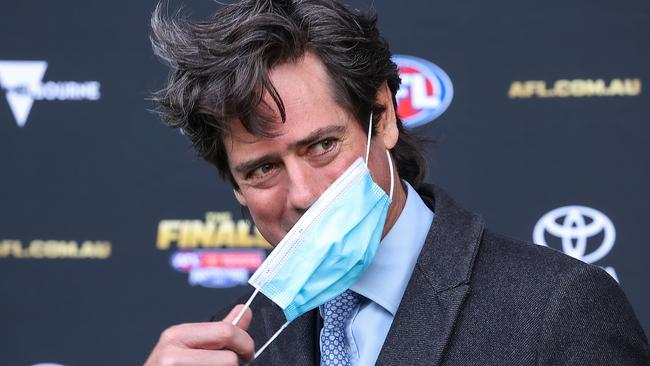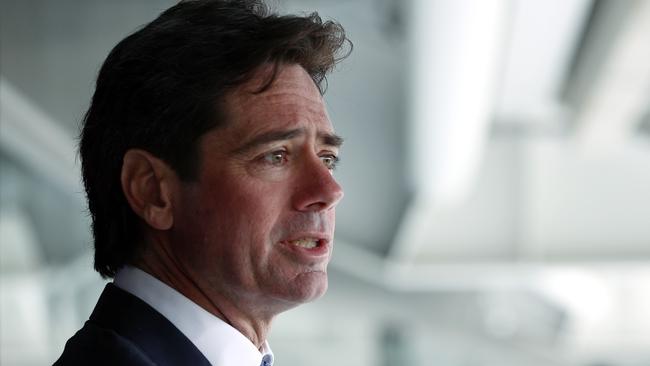AFL announces operating loss of $43 million following 2021 season
AFL clubs paid a total of $233.9 million in player payments in 2022. Find out who the top earners were and how the average wage has changed.

AFL
Don't miss out on the headlines from AFL. Followed categories will be added to My News.
The AFL has revealed to its clubs it was forced to spend an additional $76 million the past two years due to the Covid crisis.
The league announced its 2021 financial results on Tuesday, with an underlying operating loss of $43 million, compared to an underlying operating loss of $22.7 million in 2020.
This was despite recording a cash surplus last year.
The total payments to AFL Executives equated to $9.8 million, compared to $7.0 million in 2020, and $10.4 million in 2019.
The size of CEO Gillon McLachlan’s wage and the exact number of executives was not disclosed.
AFL clubs paid a total of $233.9 million in player payments - an increase of 37.53 per cent from the 2020 figure of $170.0 million.
The average player salary for a listed player in 2021 was $372,224 increasing from $259,651, for the 2020 year, with a total of 655 players listed across the competition, not including rookie list players.
Three players earnt more than $1.2 million last year while six in total in the one million dollar plus bracket.
As the Herald Sun AFL Rich List revealed last year Lance Franklin, Jeremy McGovern and Dustin Martin were the three highest paid players.
The AFL’s revenue increased by $63.3 million to $738.1 million, due to increased broadcast revenue and improved commercial returns.
The additional $76 million was spent on Covid-related expenses in 2020 and 2021, which included extensive Covid testing, additional travel and accommodation requirements and the setup of hubs.
Stream every match of every round of the 2022 Toyota AFL Premiership Season Live & Ad-Break Free During Play on Kayo. New to Kayo? Try 14-days free now.

“Critical decisions were made in 2020 to underpin the financial strength of the industry with the introduction of debt facilities to the value of $660 million,” AFL chief financial officer Travis Auld said.
“These facilities were extinguished in 2021 following the continued focus on managing the overall cost base and driving revenue growth, while delivering the season safely in a pandemic environment.
“As the 2021 year played out, our operating expenditure continued to increase due to the costs of accommodating our clubs throughout the season, some who were on the road for months on end.
“This also included the additional precautions taken during travel and interstate stays to safeguard the players, clubs, and the community.
“Our balance sheet remains strong, and despite the significant cash cost required to deliver the AFL and AFLW seasons, the co-ordinated effort to reduce the industry cost base and protect revenues means the AFL was able to report a cash surplus for the financial year.”
Auld said the league’s focus was now on strengthening the industry’s balance sheet.
“We have survived the most challenging two years in the game’s history and while we know the next 12 months will continue to surprise and test us, our priority remains to keep our game as affordable and accessible as possible for all,” Auld said.


